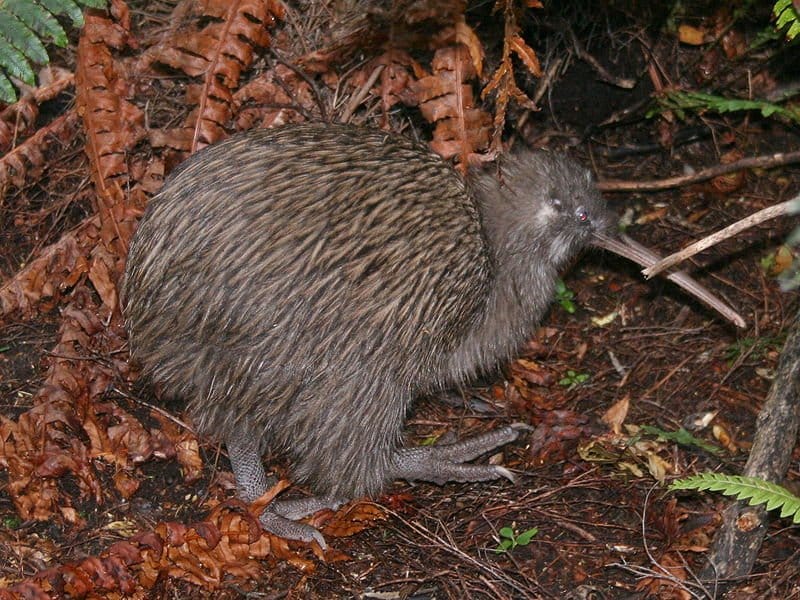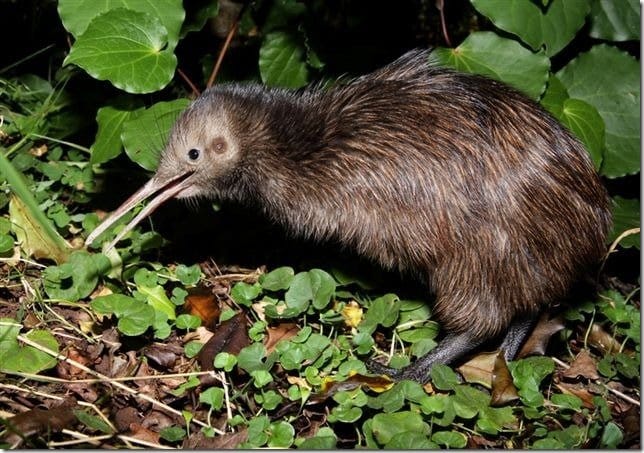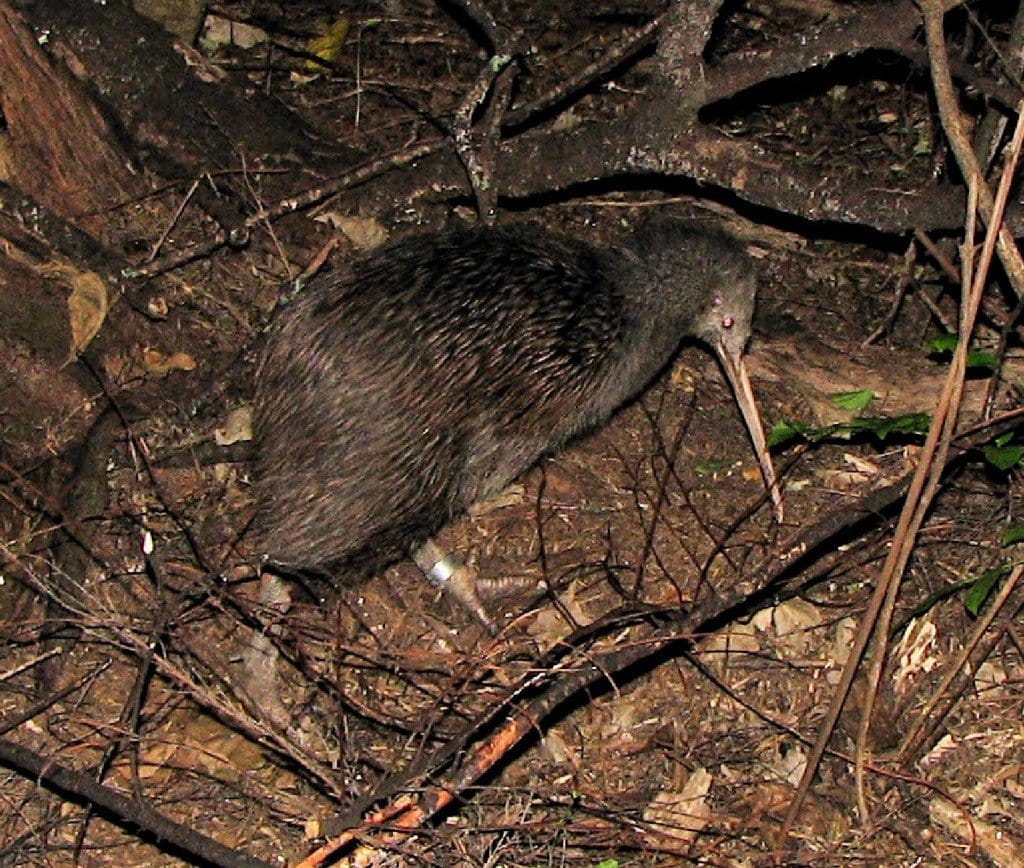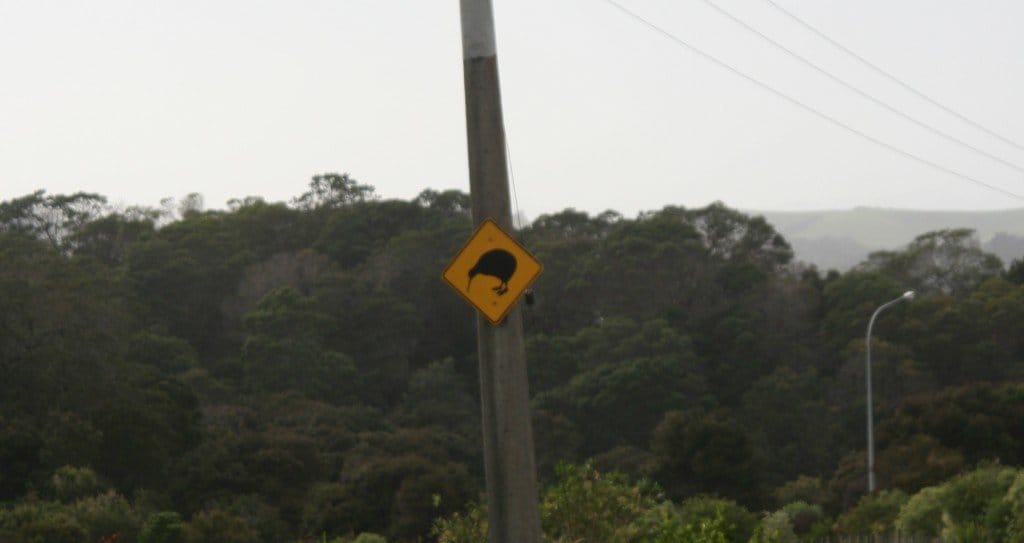Most people, if asked, would confidently name what they thought the National Bird of New Zealand was. They would all be wrong, as New Zealand has no official National Bird. In spite of this New Zealand does have an iconic family of birds that has served as an emblem for the country for over a century, the kiwi. The kiwi (note, Maori loanwords do not get an ‘s’ when made plural) were first used as logos in the 19th century, and were quickly adopted as a a national emblem before the turn of the century. The name became applied to the people of New Zealand during the First World War (until then they had been called En Zeds, Maorilanders or Fernleaves!).
For all its cultural ubiquity in New Zealand, actually seeing a wild kiwi is actually quite a challenging proposition for a birder. There are are presently thought to be five species of kiwi with a possible sixth extinct species, all of which have suffered varying degrees of range contraction since the arrival of humans. Three species are restricted to South Island, one to North Island, and one used to be found on both but is now restricted to a few small offshore islands. They are commonest where they are intensively protected and managed, but these places are often remote and hard to visit. In addition to this kiwi are nocturnal.
In spite of this there are some opportunities to see wild kiwi. These are generally carefully managed in order not to disturb these important birds, as part of organised trips. One such guided walk departs nightly from Wellington’s Karori Sanctuary (or Zealandia), another runs from the lodge on the end of Kapiti. Both these tours are for the Little Spotted Kiwi, the smallest species and one now one mainly confined to offshore islands. Another tour on Stewart Island allows you to see Southern Tokoeka.
 Stewart Island Tokoeka (Apteryx australis) are often the highlight of a visit to Stewart Island. Image by Glen Fergus. (Creative Commons Attribution Share-alike)
Stewart Island Tokoeka (Apteryx australis) are often the highlight of a visit to Stewart Island. Image by Glen Fergus. (Creative Commons Attribution Share-alike)
It was to one such kiwi-friendly location that we went to next. After a lazy Christmas spent in Whangarei Nicole and I left for a three day trip to the northern end of of Northland. Our first stop was the Bay of Islands, and one island in particular. The Bay of Islands is a very popular area for tourists, both those looking for natural history and for human history. We spent the night on Aroha Island, a small reserve linked to the mainland by a thin road and a great deal of mangrove forest. The reserve allows day visitors, but only campers or people staying in the cabins can look for kiwi at night (the road sign pictured above was taken near the island). One of the nice features of the island is a short mangrove broadwalk from which you can watch fish, crabs and several Banded Rails. Both the rails and the mangroves reach the edge of their ranges in New Zealand, generally occurring north of the centre of the North Island.
It had been a very dry summer (up until we started travelling anyway), and the dry earth makes foraging harder for kiwi. Because of this they are apparently harder to see, and for the reason Aroha Island were not conducting tours as they were harder to see due to this. They did lend us red-light torches (flashlights) so that we could look for them ourselves. We set out at sunset, with the still partly sky filled with orange clouds giving the forest an otherworldly feel. Soon it became dark, and we slowly walked down the paths ringing the island. Searching for kiwi is unlike spotlighting that I’ve done while looking for nocturnal animals in the past. We walked with the lights off, moving forward for a bit and then pausing and listening for a kiwi moving around. Where the forest cover was at its thickest we were almost blind, but we moved onwards.
We struck gold after about an hour. Instead of hearing the shuffling bird in the undergrowth, however, we heard a full throated cry. It’s hard to describe, have a listen to the related Southern Brown Kiwi here. But we didn’t just hear it, we heard it very close. I ducked down excitedly and switched on the read torch, shining the weak light under a large bush, and sure enough there was a North Island Brown Kiwi. Nicole was there too, and had the presence of mind to notice it was a male, since it had a shorter bill than a female would have. For a non-birder she certainly learnt fast! Males are also smaller than females. The male soon crossed the path and ran up the hill out of sight, but not before we both had a good look. We continued looking for them for another hour or so but didn’t get anything more than a few distant calls, but we were so stoked by the sighting we didn’t mind. I didn’t get a photo (no flash photography is allowed), but the nice people at Aroha have provided me with some for your enjoyment.

 North Island Brown Kiwi (Apteryx mantelli) Images provided by Aroha Island, used with permission.
North Island Brown Kiwi (Apteryx mantelli) Images provided by Aroha Island, used with permission.
Seeing a wild kiwi is potentially the highlight of a star-strewn birding visit to New Zealand, but please respect the tenuous situation the five species are in and any measures in place for their protection.
…
This is not part of a series of posts about national birds, as kiwis are not, as discussed above, actually national birds. Please click here to see the archive of actual national bird posts.












“Seeing a wild kiwi is potentially the highlight of a star-strewn birding visit to New Zealand”
It certainly is (boast, boast, brag, brag). 🙂
Okay, I took the easy route and went to Stewart Island, but I found all my kiwi myself (no guided tour), three to be precise. And typical of the island: one in bright daylight.
I’d rate this as one of the highlights of my birding “career” so far.
Thanks for this great post.
good on ya!! Thank you for posting. I am happy to hear you and Nicole got to see a kiwi while in NZ! (and not in the zoo!). I am off to Tiritiri Matangi Island where I will camp for a few days while I work on my masters project and you give me hope that I might site a kiwi. 🙂 🙂